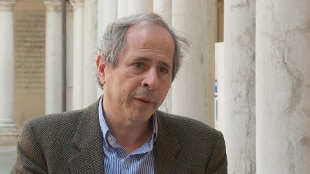- Investigation of the red zone, Crisanti accepts the position of technical consultant of the Bergamo prosecutor's office
- Failure to red zone in Alzano. Investigate the power of attorney
- Red zone, Bonaccini: "A Medicine made at night by informing the government"
- Red zone investigation, Conte listened for three hours by the prosecutors from Bergamo
- Red zone Bergamo, the virologist Crisanti consultant to the Public Prosecutor
- Coronavirus, Crisanti: "To say that the virus no longer exists is madness"
Share
22 June 2020 Virologist Andrea Crisanti has accepted the role of technical consultant on the failure of the red zone and on the reopening of the emergency room of the Alzano Lombardo hospital. Leaving the Bergamo prosecutor's office, after meeting the acting attorney Maria Cristina Rota, Crisanti, he stressed: "I received four questions about the hospital in Alzano and the red zone, not the RSAs. I will make use of the collaboration of statisticians. I took 90 days to deliver results. " Before entering the public prosecutor's office, Crisanti had told reporters "If we had done the same as in Alzano at the Schiavonia hospital, it would have been a massacre", referring to the failure to close the Pesenti Fenaroli hospital in the Lombard town.Covid diffusion in the world does not bode well
Compared to the claims that the masks will no longer be needed from the end of June "I hope Zangrillo is right, but the dynamics of the epidemic in the world does not give us much hope". This was stated by Andrea Crisanti, director of the department of molecular and virological medicine at the University of Padua, speaking in Agorà, on Rai 3. "In a situation whose elements we do not know, there is discussion about mutation, virulence, imported cases and we see the spread in the world that increases - said the virologist - in my opinion they should adopt a precautionary principle. It is the first year that we face this epidemic, it is difficult to make predictions ". How important is the approach taken by the different regions "are the numbers to speak: in Veneto and Lombardy we started with almost the same number of cases, the difference is that for a week, while we capillarily isolated all the positive cases, in Lombardia thought to restart Milan ". As for Lazio, the fact that there are fewer people in intensive care and hospitalized than in other regions, may depend on "a different health approach", added Crisanti. "In Lazio we were able to identify and make swabs", moreover it can count "the decision to hospitalize positive people: in other regions people with minor symptoms were left at home".
In Vò, asymptomatics have spread
It is proven by scientific studies conducted in Vo 'Euganeo that asymptomatics spread coronavirus and, moreover, "in many diseases they are more infectious than symptomatic", as for measles and tuberculosis. Andrea Crisanti, director of the Department of Molecular and Virological Medicine of the University of Padua, who spoke during the transmission Agorà, on Rai 3, sheds light on a theme that sees different positions also among experts. "From the serological survey conducted in Vo 'Euganeo, it was seen that there were 150 people infected on February 22. If it is true that the virus entered it in the third week of January, how is it possible that no one went to hospital until February 20? was it transmitted except by those who had no symptoms? ". On the other hand, "for measles and chicken pox, asymptomatic are much more infectious than symptomatic. And the transmission of tuberculosis in 80% of cases is also done by asymptomatic. Also because, if a person is sick and is in bed, he has less chance of meeting others and passing on the disease ".
Return of infections from outside is a certainty
"For Italy, the risk of new infections coming from outside is not a possibility, but a certainty. We have recently experienced this in Padua, where a caregiver has returned from outside the European Union and infected the whole family, "Crisanti said during the Agorà broadcast on Rai 3. As for the studies that speak of a mutation of the virus that weakened it, he continues," they are not reliable because they are based on impromptu observations and not on a experiment. To understand if it is true you have to infect an animal and see what happens, but for now we don't have an animal model to understand it. " It is true that people who get sick do not get sick as before, but this, he reiterated, "is because we have a mask and distance that reduce the viral load". Also because, if it is true that "the virus changes from us, it should also change in America and Germany, yet we see a situation of contagions that does not leave us thinking about this"
Bewildered change of WHO strategy
on tampons "surely it is another element of confusion" and "all these messages that lack coherence leave you journalists, but also the scientific world and public health with a bit of bewilderment," Crisanti told Agorà. The director of the Department of Molecular and Virological Medicine of the University of Padua, comments on the change in the guidelines of the World Health Organization with respect to tampons. According to the new indications, the double negative buffer is no longer needed, but 3 days without symptoms are enough to indicate a person no longer infected with Sars-Cov2. "I don't know on what basis they made this statement. In this epidemic - continues the virologist - the WHO has not shone for timeliness and accuracy. Science is measure, if there is no data, it is not science". The statement perhaps made to meet developing countries "had to be qualified", because, "we now ask ourselves what the various governments must do".

